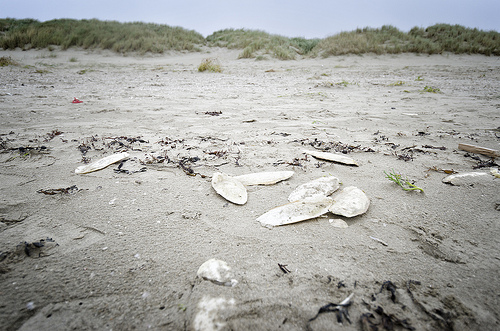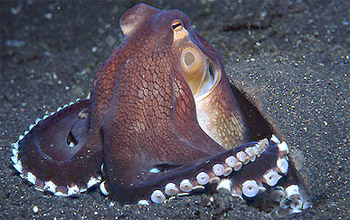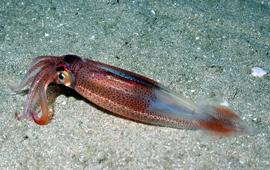Interesting Facts!
CUTTLEFISH
There is a strong argument that Sepia officinalis can be called
one of the most interesting species on earth. One might be shocked to know
the following abilities/adaptations they possess:
- They can see backwards (Dive the World 2013)!
- They have three separate hearts; one for each gill and one for the rest of the body.
- These hearts pump green blood throughout the cuttlefish's body (Amazing Facts 2010).
- Their methods of buoyancy and jet propulsion inspired the design of submaries.
- They can make themselves completely invisible to other animals with highly developed skin cells, called chromatophores (Amazing Facts 2010)!
In addition to these mentioned facts, the skeleton of the cuttlefish provides humans and
other creatures with nutrients. Their
cuttlebone
can be found in pet shops all over the world and is eaten by parrots
as a natural source of calcium; opposed to an artificial supplement
made in a lab, with possibly harmful ingredients (Amazing Facts
2010).

Now you might be wondering, “Do people eat cuttlefish, just like other seafoods?” The answer is yes. Once the head is cleaned and skinned, it is sliced thin and fried up similarly to calamari, or fried squid. Their tentacles are much more chewy, so anything in the form of a casserole complimented by garlic, wine, balsamic vinegar and red onion make for great table fare (BBC Food 2013). It is considered a delicacy by several cultures and the same is true for its close relatives- the squid and octopus.
OCTOPUS
These so called cousins of the cuttlefish are
also special in their own ways. An
octopus separates itself from all other organisms with these
characteristics:
- They have five times as many neurons as that of a human, making them the smartest invertebrate on earth (One Kind 2010)
- They have the most complex eye of all invertebrates (One Kind 2010).
- A male loses its penis (hectocotylus) after each mating season, and it regrows the following year. They can also detach their arm(s) if they are attacked by a predator (Sea friends 2009)
- They use the cups on their arms not only for catching (tactile organs) prey, but for smelling (olfactory organs) as well (Sea Friends 2009).
SQUID
To the naked eye, the squid appears to be the closest
thing to a cuttlefish, however there are a few interesting things
that are definitive of certain species that put them in their own
category.
- Giant squid have eyes the size of basketballs, can weigh over 1,000 pounds and live at depths of 13,000 feet (Sardine King 2003).
- Some species possess bioluminescent organs to make them glow in the dark, attracting curious prey (Fusion Theme 2013).
- These are the fastest invertebrates on earth. This is due to the rapid expelling of water from the mantle cavity through the squid's funnel (Sardine King 2003).
These three organisms are all part of the molluscan class Cephalopoda, meaning they strictly inhabit marine environments and are recognized by bilateral body symmetry, a distinct head, and tentacles or arms evolved from the ancestral molluscan foot (NOVA 2007).
To Learn more interesting facts about the cuttlefish check out this site.
![By Parent Géry (Own work) [Public domain], via Wikimedia Commons](travelportal/images/newheader.jpg)
.jpg)